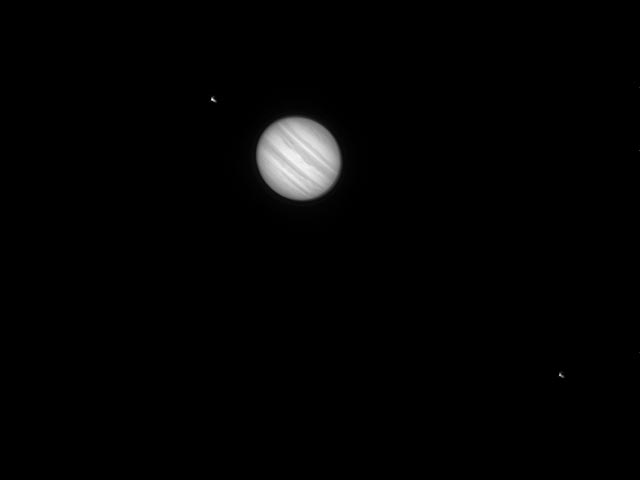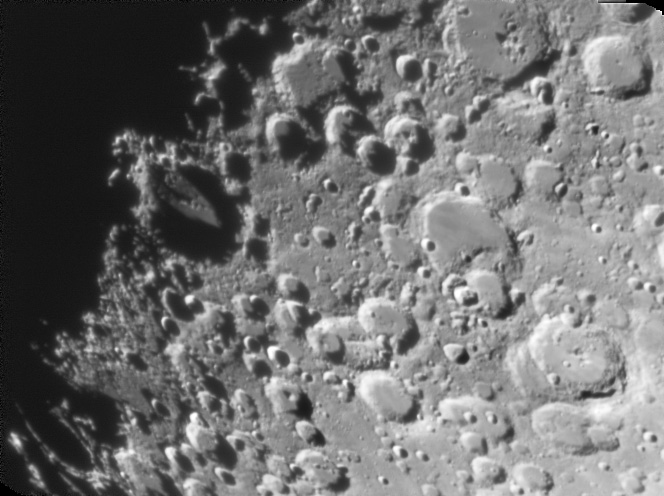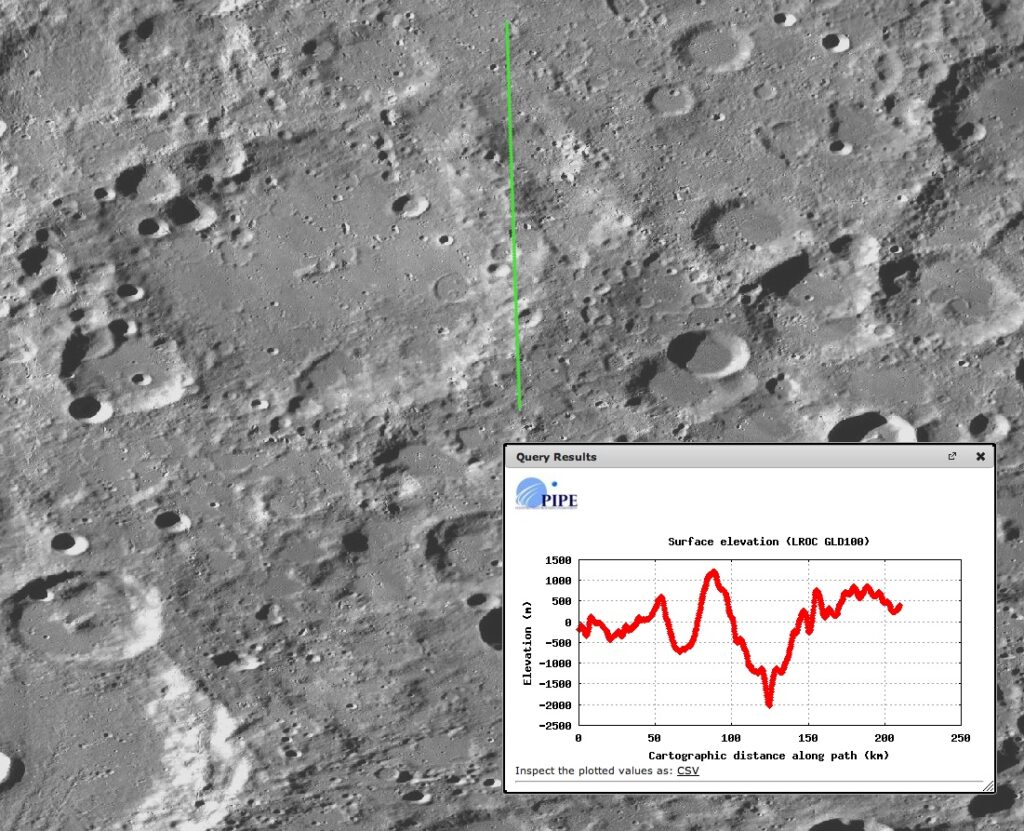Session Stats
- Session Started 18:56
- Seeing: II Slight quivering of the image
- Transparency: Poor. The Milky way was invisible and only principle Constellations stars were seen below a altitude of 45 degrees
- Airmass at time of observation: Jupiter -1.2 , Moon- 1.2
Objects: Jupiter and Magnius Crater, The Moon

The new weather station has now been up and running for the last three weeks and has been logging all sorts of data. I’m not sure which data is relevant to an evenings observations, but here’s a graph showing Windspeed, Temperature and the Dew point. As I mentioned in previous posts, the weather is something I know very little about, so hopefully all this data I’m collecting might mean something once I start getting into the subject.
Conditions this evening were pretty crap, but it was clear and not a night to pass up and not open up the observatory for a looksie. Views of Jupiter were quite poor compared with previous sessions, but she is still high up in the sky so every opportunity to view her needs to be taken. With the 10mm three bands were easily seen, with the South Temperate band coming in and out with averted vision. The GRS was only discernible, but I wouldn’t have liked to have said ‘Yes, that’s it’ with any degree of certainly without looking up it’s location first.
Realising that trying to do anything Deep Sky related was out of the question, we fired up the DMK webcam and see what we could bag.

Moons: Europa, Callisto, Io and Ganymede.
- Scope: 250mm Altair Astro R.C f/8
- Camera: DMK21AUG618 webcam
- Image Capture: Sharpcap v1.4
- F/L: 2032mm
Processing: Autostakkert 2.1. 4000 frame avi. Selection of the best 25% of those frames. Resulting stack run through Photoshop CS5. Curves were applied to the whole image with very careful dodge and burn applied to a separate layer enhance detail. A final Hi Pass sharpen completed the processing. I realise some frown upon this practice, but I’m producing visually pretty images, not scientific data, so feel as long as the processing doesn’t look forced or unnatural, then it’s justified.
I shot 4000 frames rather that the 2000 I did last time. The first problem with this is that Registax 6 won’t load an AVI file of this size, on my iMac running the Parallels. It’s no problem on the PC in the observatory, but there is no way I’m processing images in a cold and draughty observatory in mid February.
I thought I would give Emil Kraaikamp’s Autostakkert another try. I must say I rather like this software. Registax is great, but there are so many options you can set and have no idea what setting does what. Autostakkert, is pretty idiot proof and apart from alignment point selection, pretty much just does stacking without too much user input. The results it produces are as good as Registax’s , so why bother with anything more complicated-bearing in mind where I’m on the web-camming learning curve.
The GRS in this image can be made out, as can the shadow of Io transiting the planets surface.
From now on I need to start using my Barlow when using the webcam. The 2 metre FL is nowhere near long enough and I need to start imaging more detail.

- Scope: 250mm Altair Astro R.C f/8
- Camera: DMK21AUG618 webcam
- Image Capture: Sharpcap v1.4
- F/L: 2032mm
Processing: Autostakkert 2.1. 4000 frame avi. Selection of the best 65% of those frames. Resulting stack run through Photoshop CS5. Curves were applied to the whole image with some dodge and burn applied to a separate layer enhance detail. The midrange looks washed out and this was caused by the conditions. I didn’t want to over-do this area as that just adds to the feel that you’ve over-processed. A final Hi Pass sharpen completed the processing.
The Moon was up this evening so before I started any of the above, I gave the terminator a good look. I was struck by the crater Maginus and how a gap in the craters edge allowed that streak of light to fall on the crater floor illuminating the central peaks. The peaks themselves cast their own shadows across the floor.

With the Webcam out I decided to bag 4000 frames of this crater, before I moved on to Jupiter. Everything still looks a little soft, but trying to sharpen even further doesn’t help. Looking at the image it’s hard to see why that shaft of light would be created. I went to the LRO website and plotted an elevation graph at 90 degrees to the light source and on the craters edge and you can see from the plot the notch in the crater wall that would support this.
Looking at it now and trying to make sense of of the shape , It does remind me of a cloven hoof from say a Cow or Deer! Despite the poor transparency, all these details looked pin sharp and I enjoyed the 20 minutes or so I had at the eyepiece.
All in all, a rather productive evening.